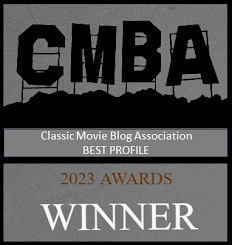Tony Rome is a former cop who likes gambling, women, and living on a boat. In need of cash, Tony accepts a job from his former partner to return an heiress, who has passed out in a cheap hotel, to her father. The young woman (Sue Lyon) and her wealthy patriarch (Simon Oakland) each hire Tony for different reasons: She wants Rome to recover a missing diamond pin that she was wearing; her father wants the private eye to find out why his daughter has been acting strangely.
By the time Tony figures what's going on, he's been beaten up multiple times, accused of murder, and nearly killed himself. On the plus side, he has also met a beautiful, very rich divorcee (Jill St. John)!
 |
| Gena Rowlands. |
On the negative side, Tony Rome is sexist and includes at least one racist remark. It's one thing to have a male character leer at a scantily-dressed lady; it's another thing when the camera lingers--close up--on a woman's derriere. Then, there is the 52-year-old Sinatra who has to fight off beautiful women half his age. (Of course, Frank did date the much younger Jill St. John in real life....).
 |
| Jill St. John. |
Gena Rowlands stands out among the supporting cast, but she's barely in the movie. In fact, none of the female characters get much screen time and that includes Sue Lyon and an unbilled Deanna Lund (according to Tom Lisanti's Fantasy Femmes of Sixties Cinema, the future Land of the Giants TV star was embarrassed with her performance and asked to have her name removed from the credits.)
Despite just middling box office success, Frank Sinatra returned as Tony Rome in the following year's Lady in Cement. The only other holdover from the first film was Richard Conte as Tony's police detective chum and sometime nemesis.
The story gets underway quickly when Tony discovers the title corpse while scuba diving for sunken treasure. While the police try to identify the victim, an imposing thug named Gronsky (Dan Blocker) hires Tony to search for a missing go-go dancer named Sandra Lomax. Could she be the lady wearing cement shoes?
 |
| Dan Blocker. |
 |
| Raquel Welch and her tall hair. |
Lady in Cement flopped at the box office and plans for a third Tony Rome film--to be titled My Kind of Love--were scuttled. If you plan to watch either film, I do need to warn you about the music scores: Tony Rome kicks off with an atrocious theme song suny by Nancy Sinatra whereas Lady in Cement boasts one of the 1960s worst soundtracks courtesy of Hugo Montenegro.



















































